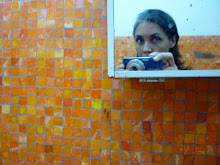
My work is somewhere between that of an archeologist, a social researcher and an artist. The photographs in this series are part of a visual notebook that accumulates images product of my wanderings around the city. This urban archive not only deals with the relationship with people and things, but with that of the “users” with the urban and social space.
This series is an approach to the landscape, a closer look at the objects that define the city in all its chaotic dimension. I have placed special emphasis on Caracas, my hometown, a metropolis that changes continually into two dimensions: that of informality, constituted basically by the shanty towns –the most common architecturalwise living condition in the so called “third world”–, and secondly by the areas that have been formally designed and “planned”. In general terms, urban chaos and the discourse of violence have spread all over the city, therefore changing the relationship between citizens and their surroundings.
Overall, I deal with overproduction, disposability, center and centrality, segregation, urbanism as a failed discipline, the marking of territories and the urban space as a place for negotiation (reterritorialization), among others. The core of this project also deals with other qualities of the city based on the aesthetic of the street (beyond cliches), the public space as an arena for debate, and invasion as the solution for living problems, among others.
 1994-97
1994-97








